
Test Drive: 2020 Toyota 4Runner Venture vs. 4Runner TRD Pro
Photography by Ben Stewart
The Toyota 4Runner has long been a cornerstone of SUV capability since the very first one launched way back in 1984. That truck, with its incredibly reliable four-cylinder engine, solid axles and neat removable top made it one of the most popular 4X4s of the ‘80s. And today the values of those rigs are climbing—quickly.
The current 5th generation 4Runner has been around for an even decade and is still valued for its reliability and off-road capability. Today’s truck has seen some significant upgrades over the past few years as well as a minor facelift in 2014. But the bones remain the same as they’ve been since 2010. Plus side? Parts are plentiful and systems are relatively easy to repair. Downside? The 4Runner isn’t quite as modern or fresh as some other SUVs. The current 4Runner might be old but it’s still one 4X4 we really dig. And that’s because Toyota has prioritized off-road capability. It’s one of the last SUVs that has real chops in the dirt.
Toyota is focused on catering to those of us that actually use our vehicles off-road. So, the 4Runner has several versions that excel on the trail. In fact, four of the eight 4Runner trim levels come standard with a rear electronic locking differential. But which one performs the best off-road? We decided to compare two 4Runners head-to-head to find out. The 2020 4Runner Venture is a new model that builds on the TRD Off-Road trim and adds some unique equipment. But the one interesting option that came on our $48,997 truck was the special Kinetic Dynamic Suspension System (KDDS). The system uses hydraulic actuators to unlock wheel travel off road not unlike a swaybar disconnect on Jeep and Ram vehicles. We pitted the new Venture against the flagship off-roader in the 4Runner lineup—the $52,147 TRD Pro complete with its Fox dampers. Can the Venture with its fancy KDDS suspension hang with the Pro? We spent a day getting dusty around Hungry Valley SVRA in Gorman, California to find out.
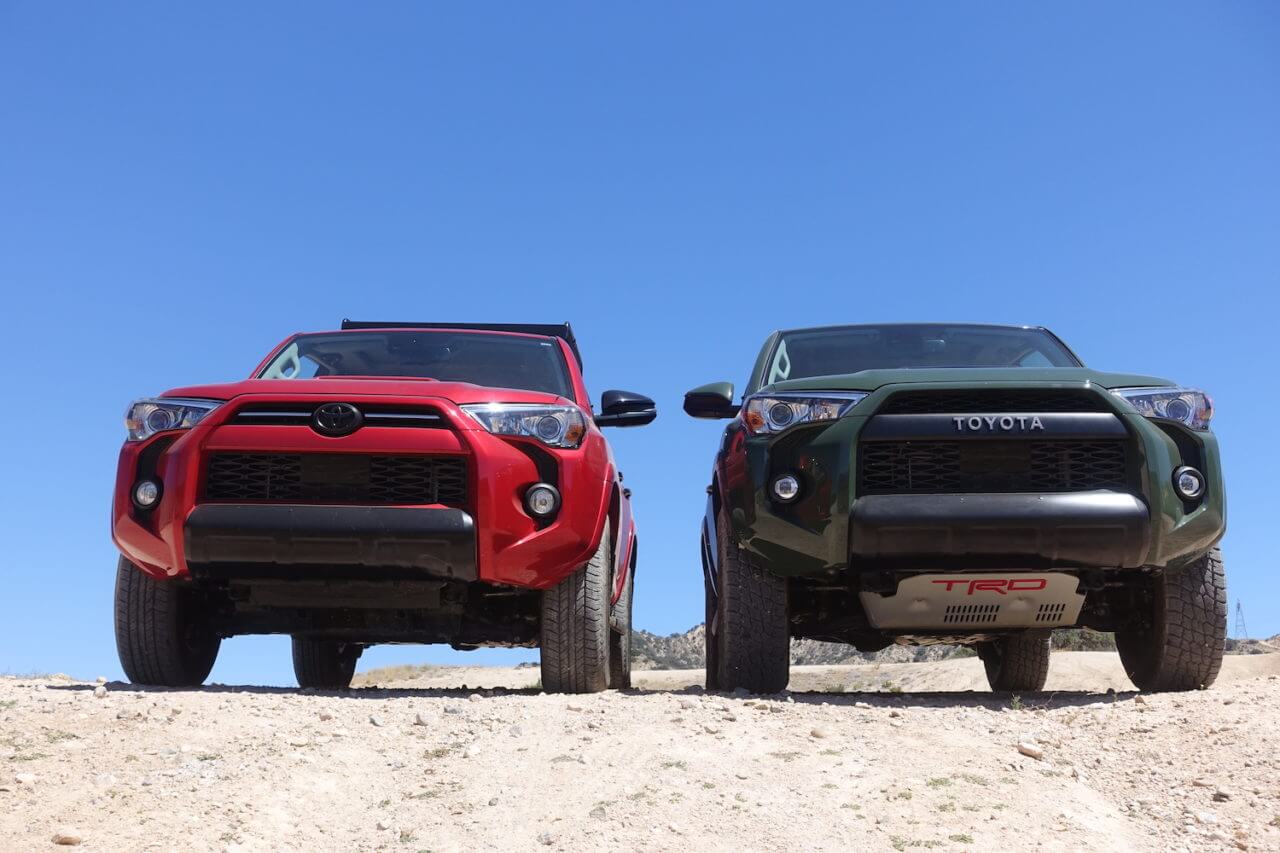
The Hardware
The 4Runner’s popularity stems from its honest and straightforward mechanical makeup. And the twin red and green ‘Runners share the very same drivetrain. Under the hood, both rigs have a 4.0-liter V6 an engine used in 4Runners since the early 2000s. Here it generates 270 hp at 5,600 rpm and 278 lb-ft of torque at 4,400 rpm. Yes, the Tacoma uses a newer 3.5-liter V6. That engine has more horsepower but less torque. The 4.0-liter comes paired to a 5-speed automatic with a 3.5:1 First gear. The two-speed transfer case of each 4Runner is shifted using a lever and has a 2.57:1 low range ratio.
Up front is Toyota’s 8-inch IFS front axle using coil springs and an open differential. In the rear, there’s a coil-sprung 8-inch solid axle located by 5 links with an electronic locking rear diff. Both axles (and all 4Runners) have 3.73:1 gears.
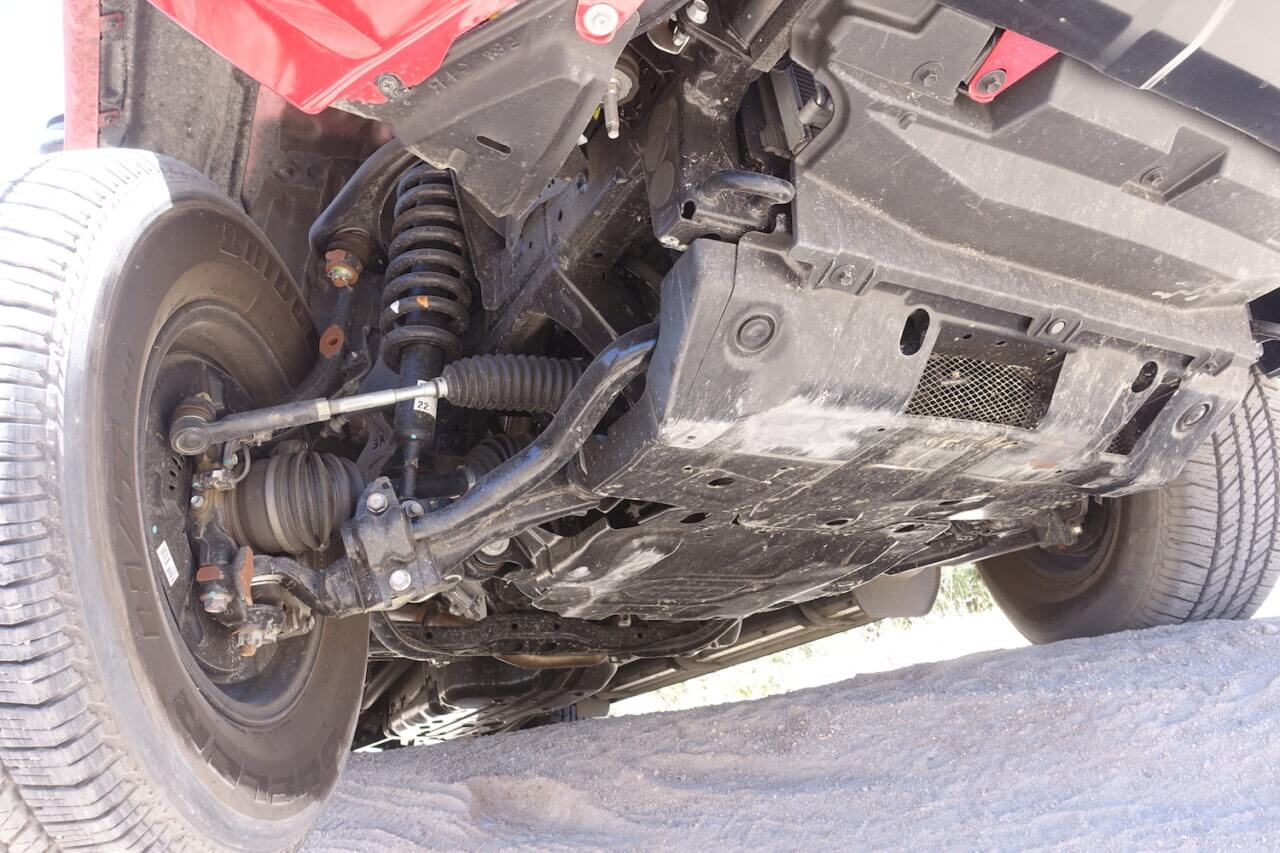
The big difference between these rigs is in the details of the suspension. The red Venture special edition came with the unique KDDS system. This suspension option uses a thicker front swaybar that mounts down on the lower control arm and it suspended by a hydraulic cylinder on one end of the frame. When that cylinder firms up for on-road use, the handling becomes tauter. But when it slackens for slow-speed off-road travel, the system allows for more wheel travel in the front suspension.
Because the swaybar wraps in front of the suspension and is spaced down from the frame to allow room for the hydraulic cylinder, the skid plate hangs lower in the Venture than the one in the Pro—we measured 8.5-inches of ground clearance up front. That’s 1.25-inches less than the Pro. In the rear, there’s another KDDS hydraulic cylinder attached to the swaybar (which runs behind the rear axle) that can loosen up and provide more axle articulation when off road, complementing the front.
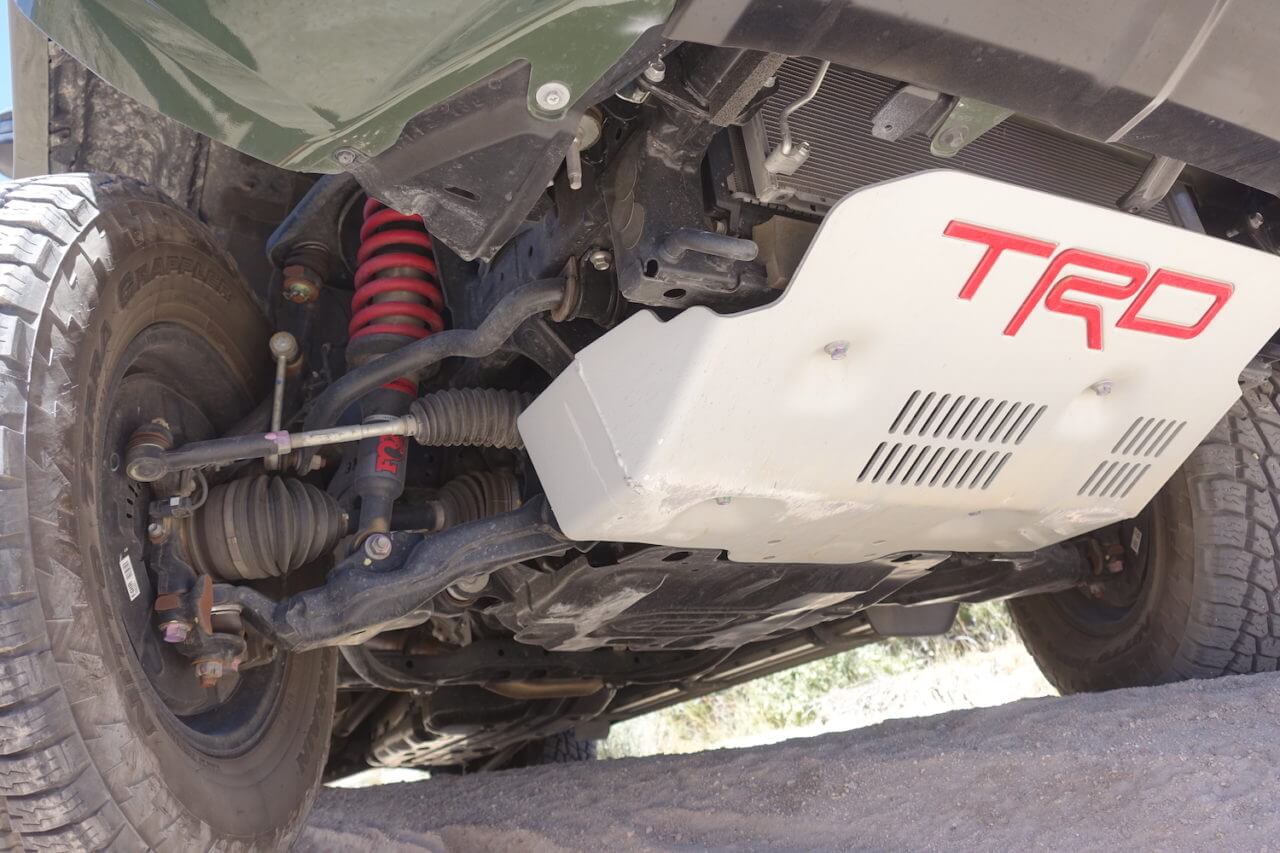
The Army Green TRD Pro has a completely different suspension. It rides on special TRD coil springs up front that are about an inch taller and have a unique spring rate compared to other 4Runners. And complementing the springs are Fox 2.5-inch dampers. Unlike the KDDS truck, the swaybar mounts high up on a link near the upper control arm. That alone creates better ground clearance over the KDDS 4Runner. The beefy TRD skidplate protects the frontend componentry and provides 9.75-inches of clearance as well as an improved approach angle over the Venture. Around back, the Pro has standard-height springs with another set of Fox dampers and remote reservoirs. Another big difference between the two trucks here is that the Pro has a conventionally-mounted rear swaybar that runs in front of the axle and is much smaller in diameter.
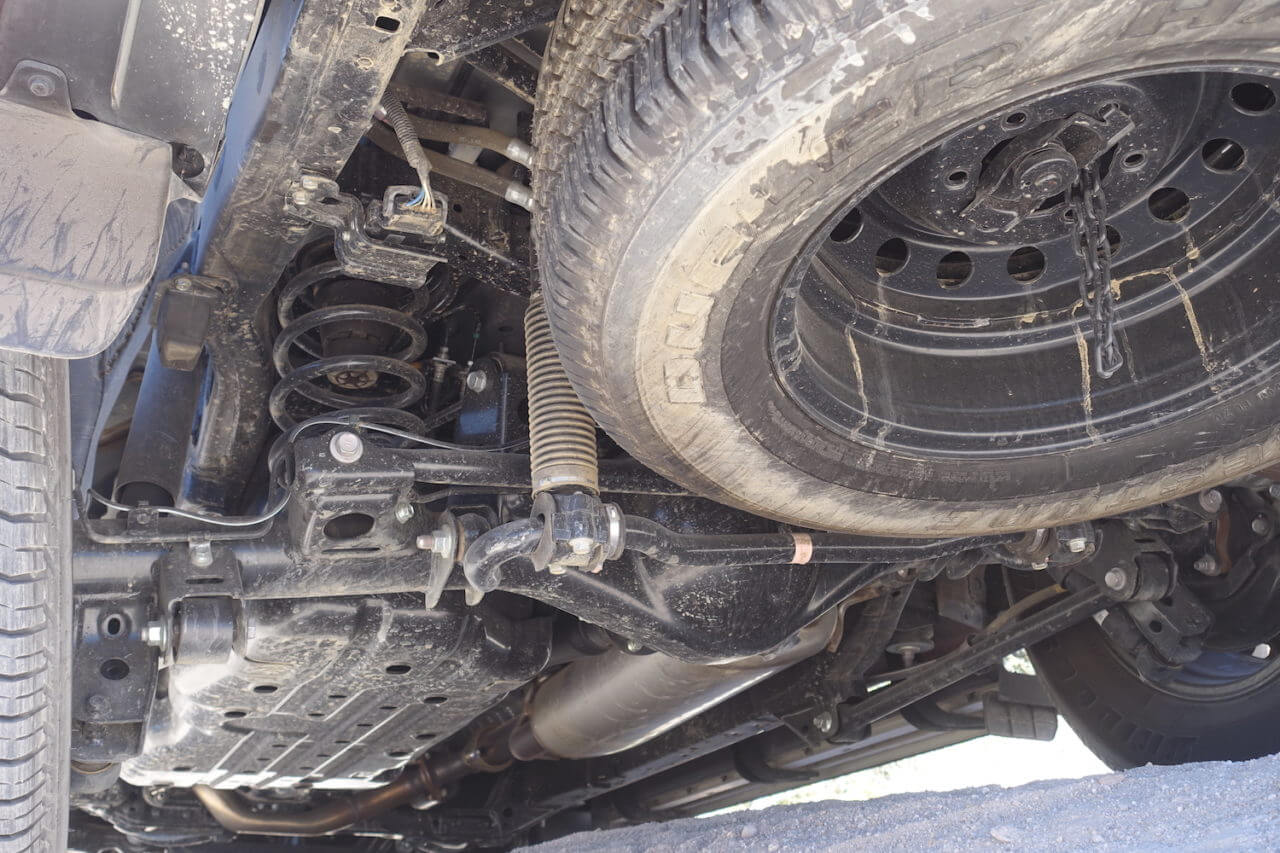
We wondered how much more rebound (droop) the KDDS system unlocked when off-road compared to the TRD Pro. So, we unscientifically measured the rebound with our tape from the bottom of the fender to the top of the tire on both trucks at maximum droop. That showed an interesting difference. The KDDS front suspension allowed for an inch more droop in our test than the TRD Pro. And looking closely at the photos you can actually see the difference. But in the rear, the Pro had 1.5-inches more droop than the KDDS.
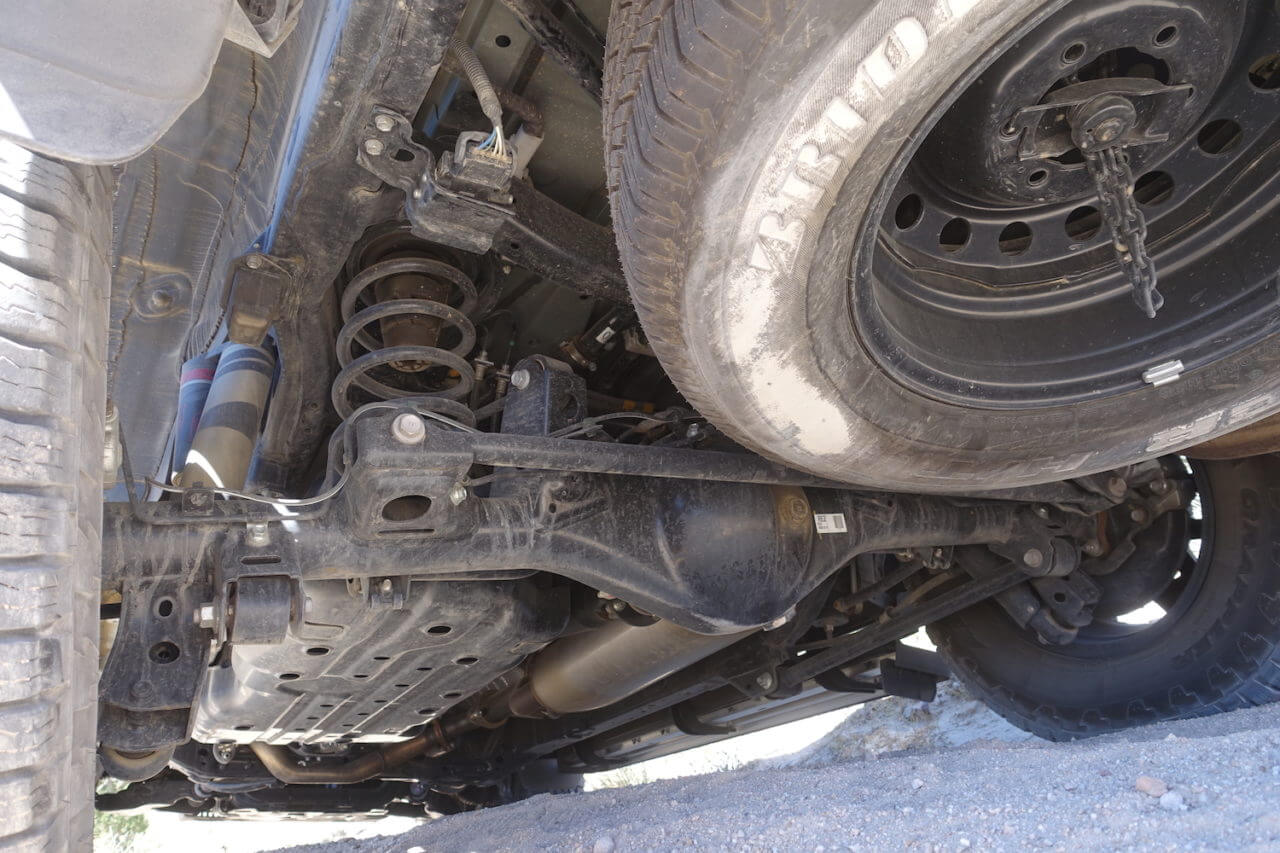
Both rigs have the same suite of electronics to help guide you off road—four-wheel traction control, Crawl Control (an off-road cruise control of sorts), hill descent control and a Multi-Terrain select system which tailors the amount of wheel slip to specific off-road situations. These systems work the same on both rigs.
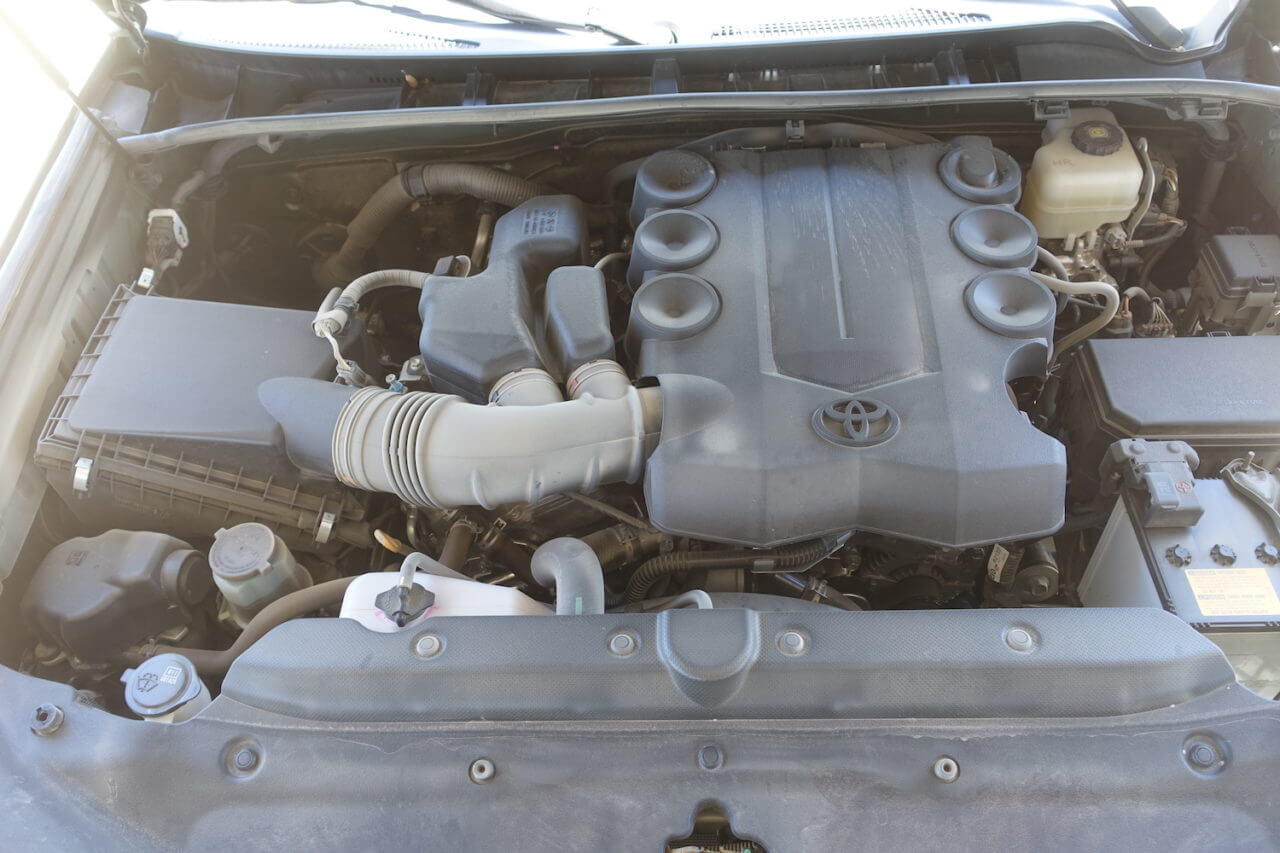
On the Street
The 4Runner is an old product, there’s no getting around that. But Toyota has done a nice job making the truck feel relatively modern. The 4.0-liter V6 may be outdated compared to the Tacoma’s newer and more powerful 3.5-liter but you know what? We like the 4Runner’s old engine better. The larger motor serves up a meatier helping of torque down low, which makes it nicer to drive around town. And that 5-speed automatic works well and seems totally adequate except on the freeway, when a transmission with more gears would be helpful. These rigs tend to hunt for the right ratio and have to settle for one that’s a little too tall or short for a steep grade. And because both 4Runners have a TRD exhaust, the note tends to drone a bit at 70 mph when the engine is turning 2,800 rpm.
Both trucks are rated at 16 mpg city and 19 mpg on the highway. And we know from previous tests of nearly identical 4Runners, that these rigs return around 18 mpg combined on a typical mixed route.
We were expecting the KDDS Venture to ride and handle considerably better than the TRD Pro. But in the real world, the differences were tough to notice. And that’s a huge credit to the TRD engineers who tuned the Pro’s suspension. The Venture’s 265/70R17 Bridgestone Dueler H/Ts have a milder tread and likely a slightly softer sidewall than the 265/70R17 Nitto Terra Grapplers on the Pro.
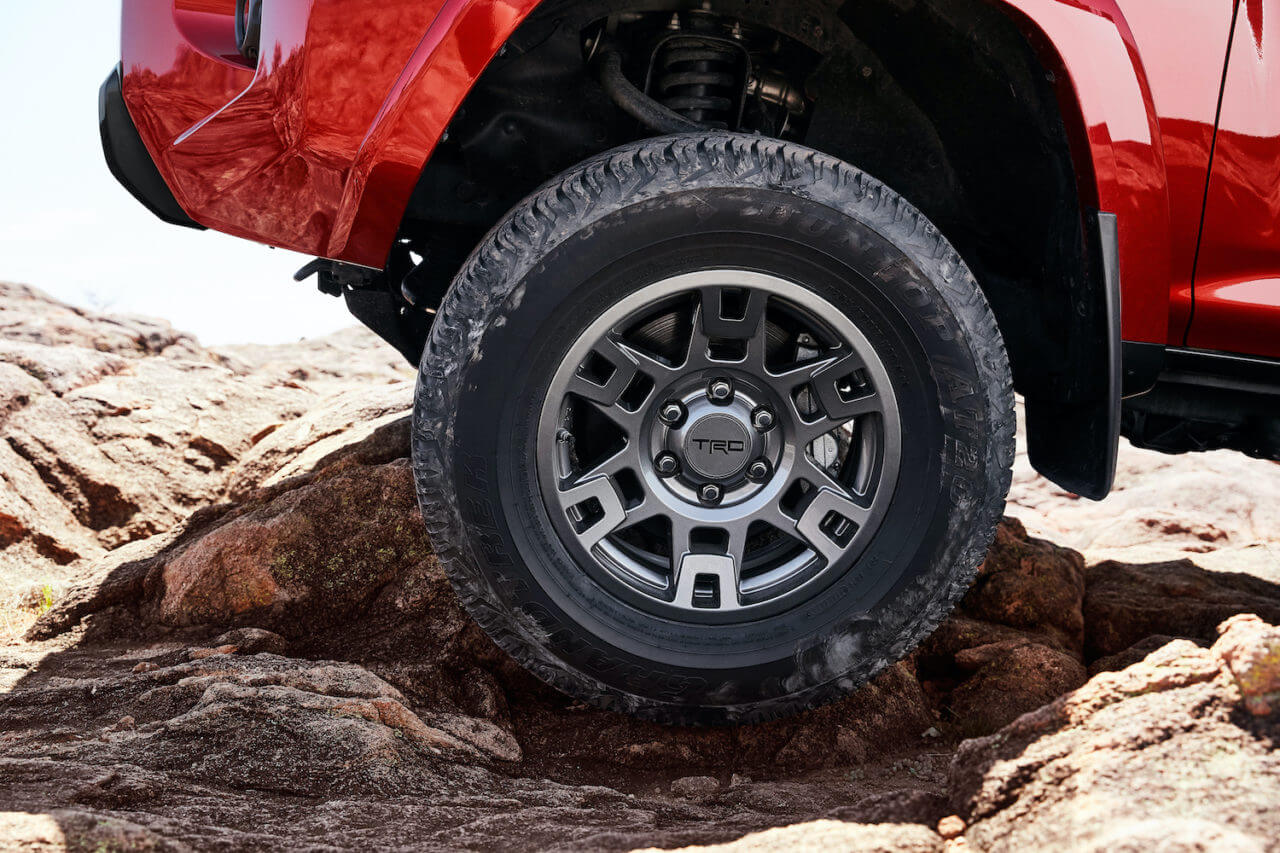
So, we discovered the Venture was better isolated over small pavement irregularities. But again—the difference was minimal. Once we hit larger potholes, the Pro was the truck to have. It was soft and smooth over the largest bumps and the structure of the vehicle felt better tied together too. We didn’t have a chance to take both trucks to a canyon road to test at-the-limit handling, but our impression after taking a few corners at speed in the city back-to-back—the Pro has more body roll. But the difference is so small it certainly wasn’t enough to keep us from daily driving a Pro.
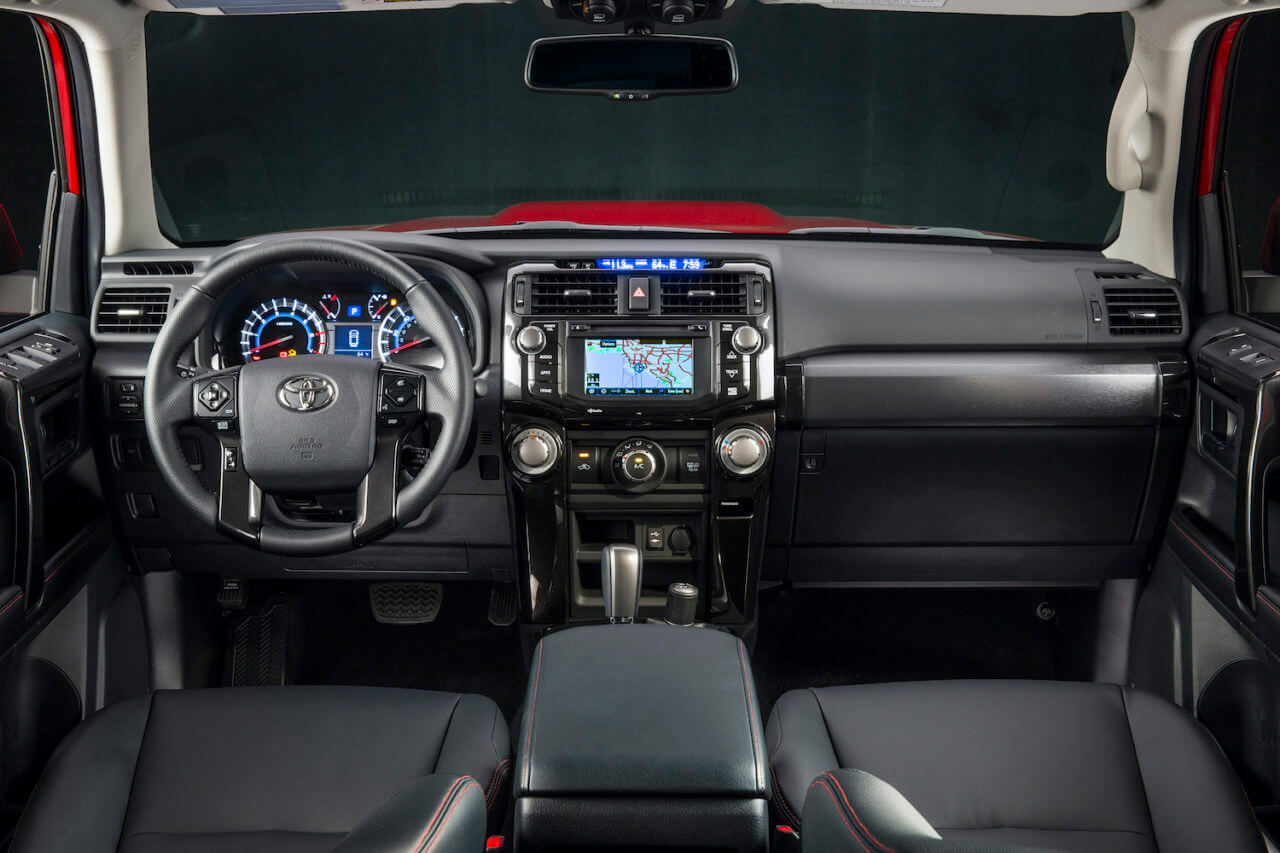
And on the inside, the Venture and Pro were nearly the same.
Both wore the same TRD embroidered seats and used an 8-inch touchscreen. But there were a few differences. Oddly, the two-use different climate control systems, the Pro has a dual zone unit with a rocker switch for fan speed, and the Venture uses three large knobs. Which one works best is really a matter of personal preference, but we liked the triple knob setup. The two trucks had different floor mats, the Pro with more aggressive rubber tire print units and the Venture with carpeted ones. And the trucks each had their own shift knob, the Pro having a larger TRD unit. Thankfully, they both used a stout lever to actuate the transfer case.
So how do the options on both trucks line up?
The $45,405 Venture special edition package adds a few distinct items: 17-inch Gunmetal Grey wheels, all-weather floor liners, a Yakima roof rack and black exterior accents. On top of that ours had a sliding cargo deck ($350), KDDS suspension ($1750), running boards ($345), power moonroof ($630), carpeted floor mats ($269), a cargo cover ($179) and a TRD sport exhaust ($799). When you add in a $750 rebate, the Venture stickered for $48,977.
The TRD Pro package starts at $50,885 and our truck added a sliding rear cargo deck ($350), running boards ($345), a cargo divider ($149), door edge guard ($79), blackout emblems ($160) and preferred owner’s portfolio ($179) for a total of $52,147.
On the Trail
It didn’t take long to see that both 4Runners were comfortable tackling moderate dirt challenges. So, we explored the park and did some back to back tests to get a sense of how each one performs on specific off-road terrain.
First up? Some mild whoops. For those unfamiliar, whoops are rippling, wave-like humps that, when taken at speed—provide a real test for a 4X4s suspension. When a rig has dampers not designed for this sort of thing, the suspension bounces hard off the bumpstops—and tries to bounce you out of the saddle. No surprise here, the TRD Pro was the better vehicle. On this section, the Pro was able to maintain a comfy pace over those humps nearing 20 mph before the suspension would bottom. And when it did, the impact wasn’t harsh. The Pro’s control over this terrain was excellent and it felt like the green truck could handle these bumps for days.
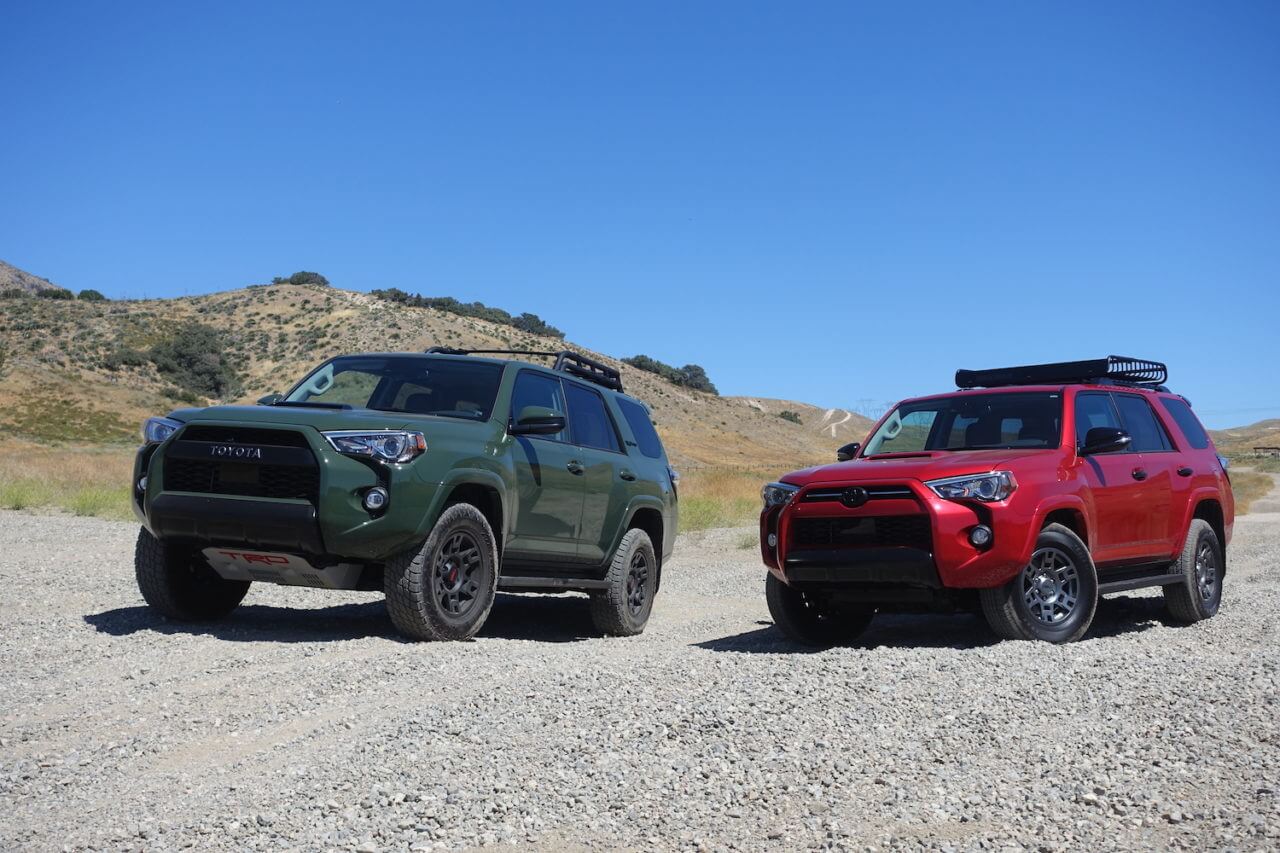
The Venture was a different story. The KDDS suspension was not only way softer but the dampers were just not up to the punishment. The front end would begin to pogo approaching 10 mph and crash down on the bumpstops. In fact, we touched down on the front skidplate a few times and thought we’d done some damage. Even that slower speed was not a comfortable one for the Venture and we slowed to a crawl.
Next, we took both rigs over to our test hill climb. This one is steep—about a 26 degree (50 percent slope), deeply rutted and soft. The only 4X4s to crest the top are the factory off-road packages with the largest tires and at least one locker. The Venture was able to crawl up to the midway point before it ground to a halt. After a few tries and some examination, we noticed it the low-hanging front skidplate just couldn’t clear the center of the hill. The ruts were deep and there’s not enough room to straddle them. The TRD Pro made it a couple truck lengths further but eventually got hung up on the rear diff. We tried the climb again with a little more speed and the result was the same. So, on this test the better frontend clearance of the Pro and probably the better traction of the slightly more aggressive tires made a difference.
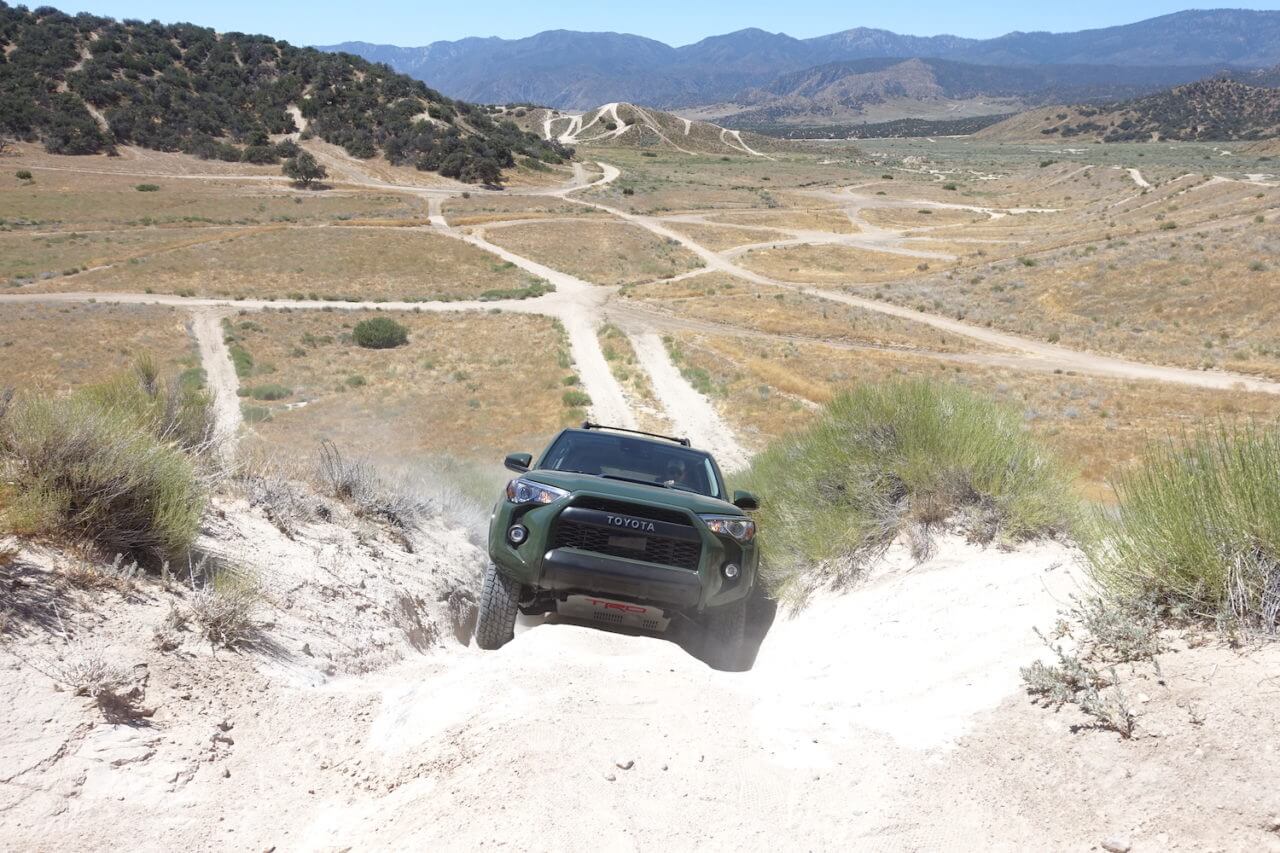
In the deep sandy wash, we shifted both 4Runners into 4-wheel drive high range and shut down the stability control. The two trucks could comfortably handle 25-30 mph in the wash and were easy to slide around. But the difference was how they felt at that same speed. The KDDS-equipped Venture showed quite a bit of cab shake and the suspension tended to rattle around. It felt oddly fragile. You could feel those vibes come up through the steering wheel too. A switch to the TRD Pro and nearly all those vibrations were gone. It almost felt like the Pro was riding on a stiffer chassis—it was so much better.
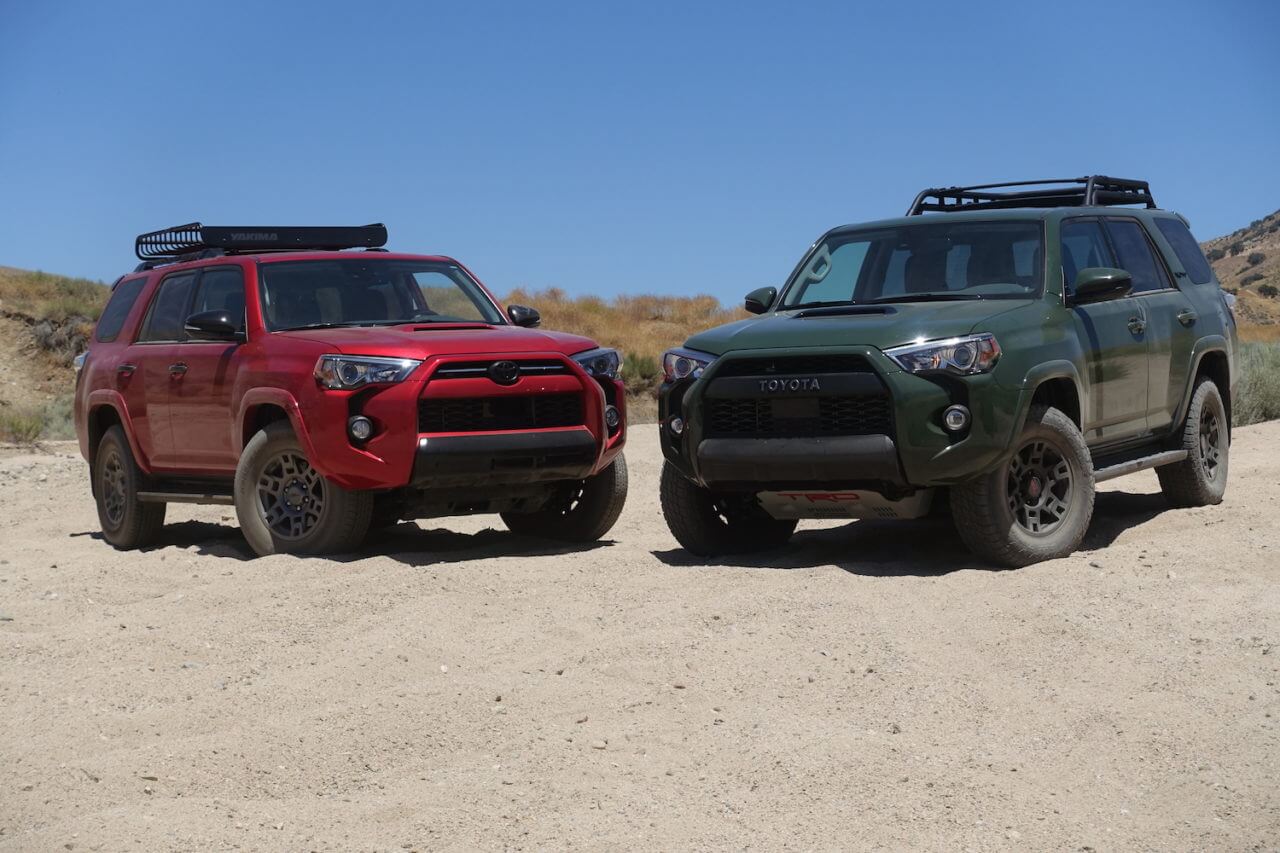
Similarly, on the fire road section of the park the Pro felt more secure, more solid and could handle much more speed. We touched 45 mph several times and when a big dip would come, we’d just brush off a little speed and hit several small whoops at 35-40 mph. The Venture didn’t like to be pushed hard. The suspension bottomed easily and again, felt a little fragile with lots of nasty feedback coming up through the steering wheel. The bumpiest spots in the Venture could be handled at around 20 mph. Any quicker and you’d hear (and feel) a massive “Kapow!” as the rig would hit the bumpstops. In terms of general off-road ride quality around the park, the Pro seemed to feel the best and offer more resilience to bottoming.
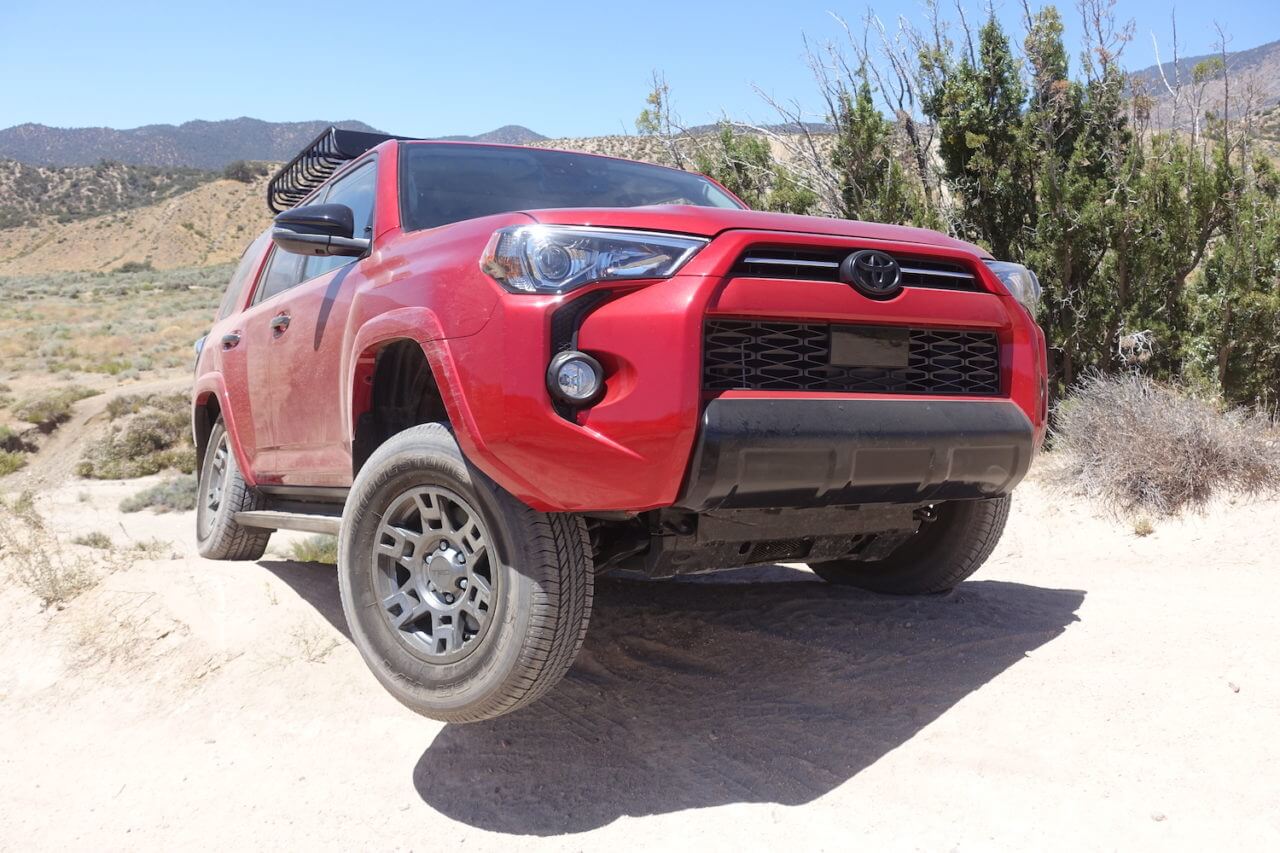
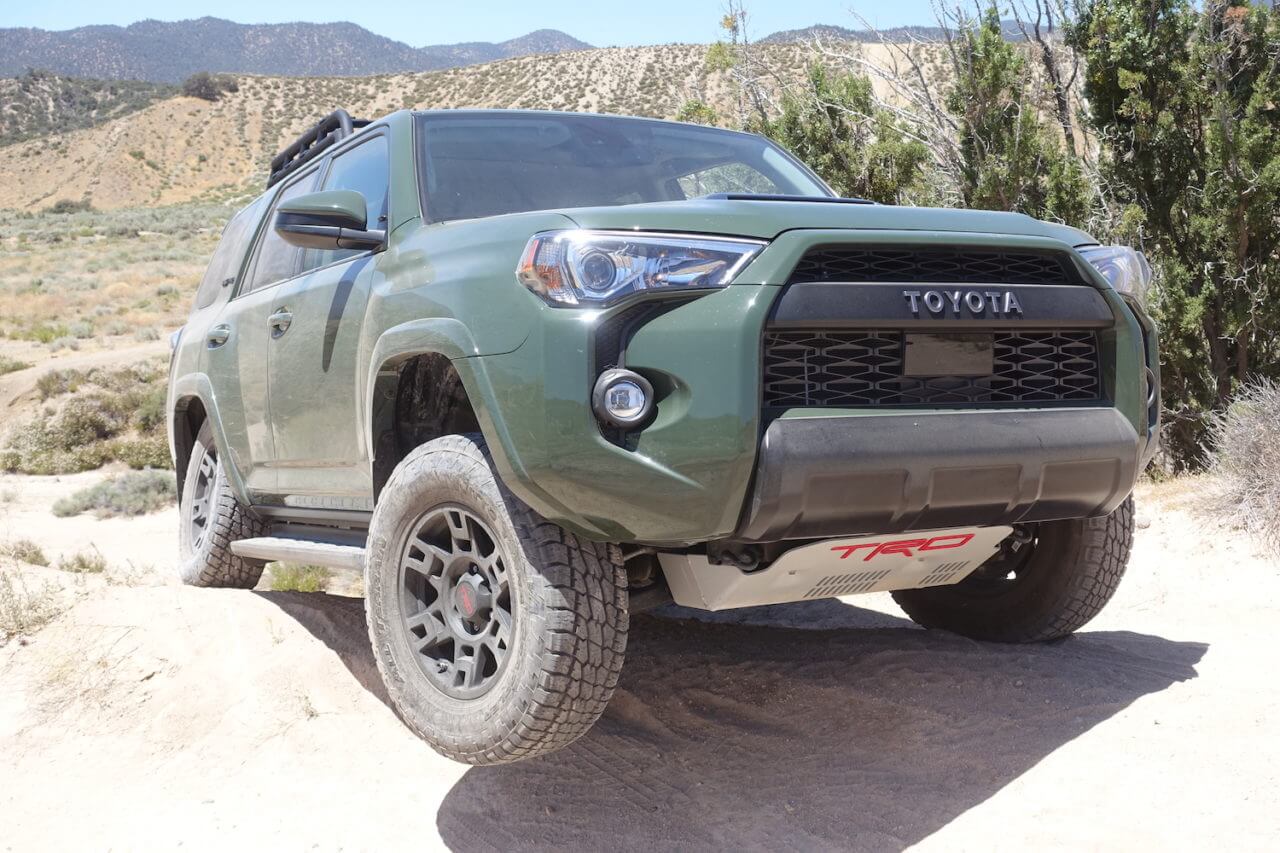
When it came to low-speed crawling, the competition was closer than any other contest we had that day. The two 4Runners each offered good articulation for IFS rigs. And with the Multi-Terrain Select in “Rock” mode, we were able to negotiate some fairly deep ruts and good-size rocks without even needing to engage the rear locker. But once locked, both rigs had an easy and drama free time crawling. But like the hillclimb, it was the extra clearance of the Pro that really made a difference. We heard lots of creaks, groans and scrapes from the Venture as we crawled around. The Pro just handled everything we threw at it without making a peep.
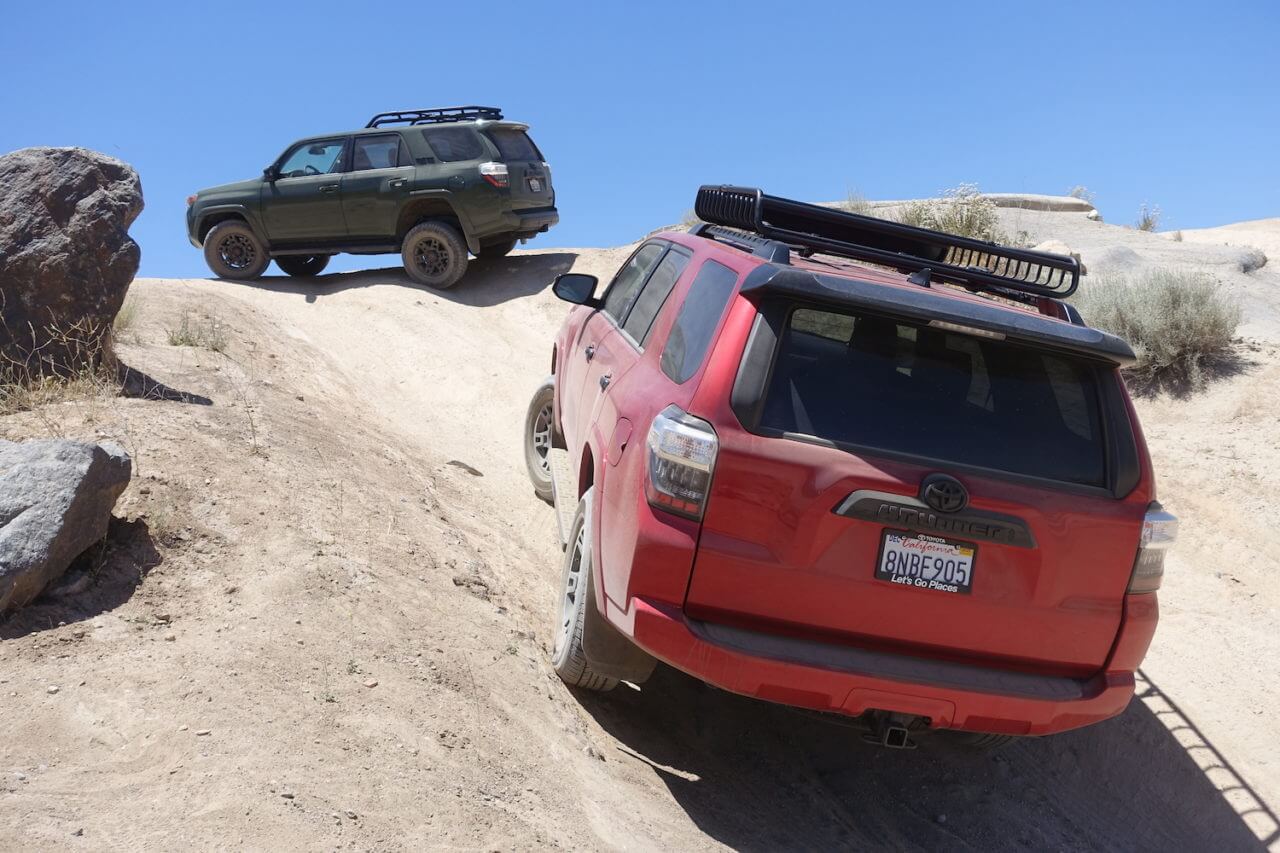
The Bottom Line
The Venture’s fancy KDDS suspension should have worked a bit better than it did. Maybe if the Pro wasn’t along for comparison—it might have seemed more impressive. But after testing both, we can confidently say there’s no reason for an enthusiast to buy a KDDS-equipped 4Runner over a TRD Pro. The Pro is clearly better as a dirt machine. Of course, it is more expensive. In our case the Pro was a little over $3,000 more. Of course, if you were to build a Venture and leave out the KDDS system as well as a few other expensive options like the moonroof and TRD exhaust, the Venture becomes a better deal and the gap widens to almost $6400. Now, if the plan is to add a lift and larger tires anyway, that 6-plus grand savings might be enough to do the trick. But honestly, the Pro is so good we’d be pretty happy with one and leaving it stock.



2